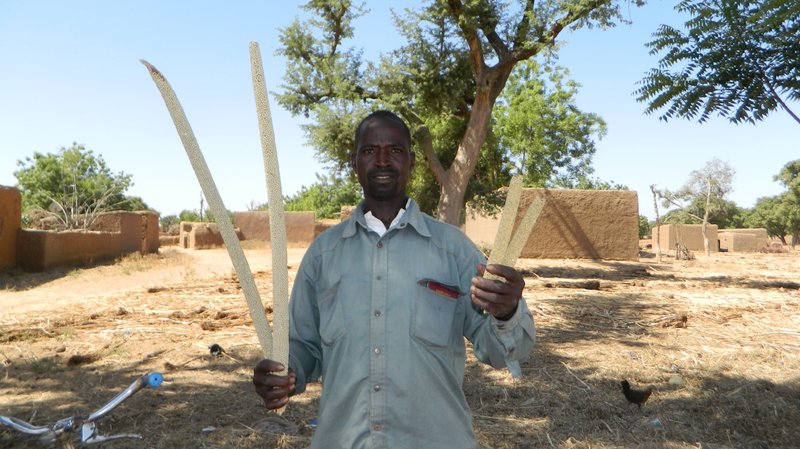Photo Story: Amazing FFF
Published
2018-01-16
This photo story submitted by Robert Sanou
Caption: In Africa we say that there is just some information that we can’t keep to ourselves.
The farmer in the photo planted two separate fields of millet, one using the FFF method (left) and the other using the traditional method (right). Just amazing!
Excerpt from Foundations For Farming - Tech Note #71
Despite large amounts of foreign aid, abundant natural resources, a favorable climate, and good soils, sub-Saharan Africa has large areas where people are under nourished and grain production is erratic, with very low average yields. Brian Oldreive, a former Zimbabwean farmer, began to question why there is so much poverty in Africa. He noticed that there is no plowing or deep inversion of the soil in creation. As a result, Oldreive studied and put into practice the concept of zero-tillage. Then he became aware of the beautiful blanket over the earth of fallen leaves and dying grass and realized that this was a very important element in God’s creation. This blanket breaks the action of the raindrop, allows water to infiltrate and feeds the soil microorganisms. Oldrieve understood the importance of mulching and quickly put it into practice which led to the development of Foundations for Farming (FFF) as a no-till system for raising maize and other field crops.
The FFF system involves permanent planting stations, lots of mulch using crop residues, and careful management. In teaching the FFF approach, Brian shows that small-scale farmers can achieve impressive yields with a simple, traditional hoe and wise stewardship of the land.
Have a photo story you'd like to submit? We'd like to feature it on the ECHOcommunity front page. Send submissions to stories@echocommunity.org